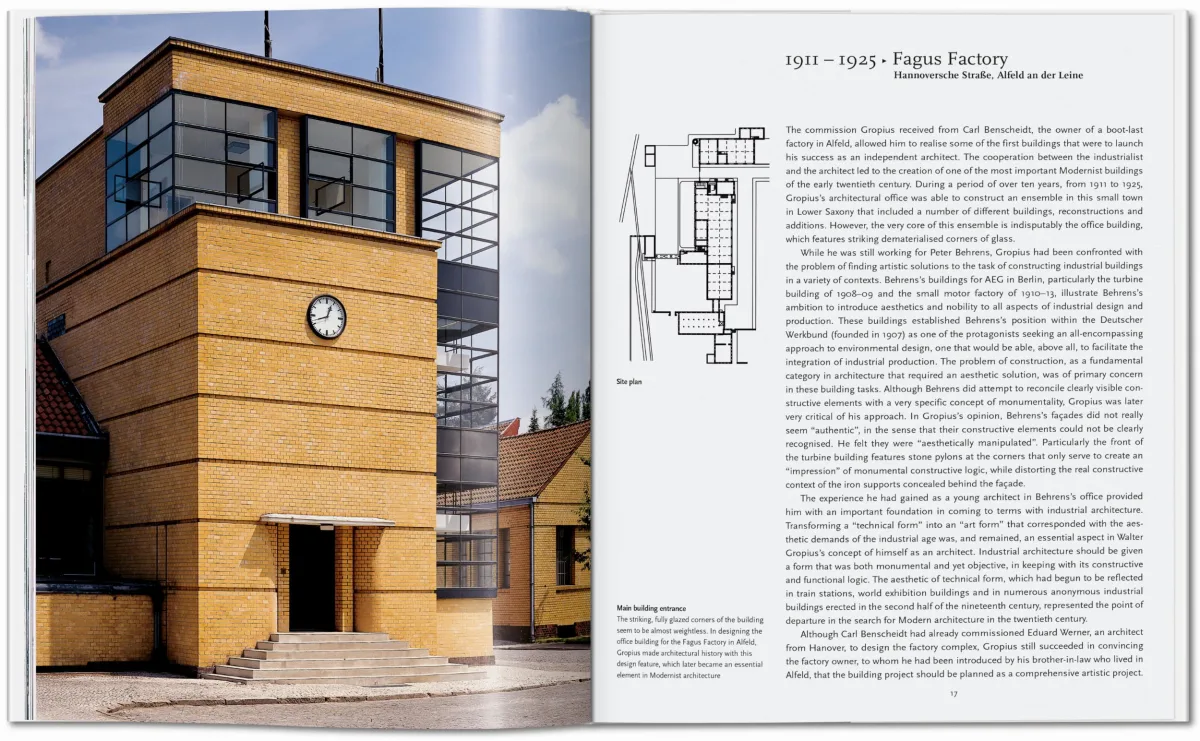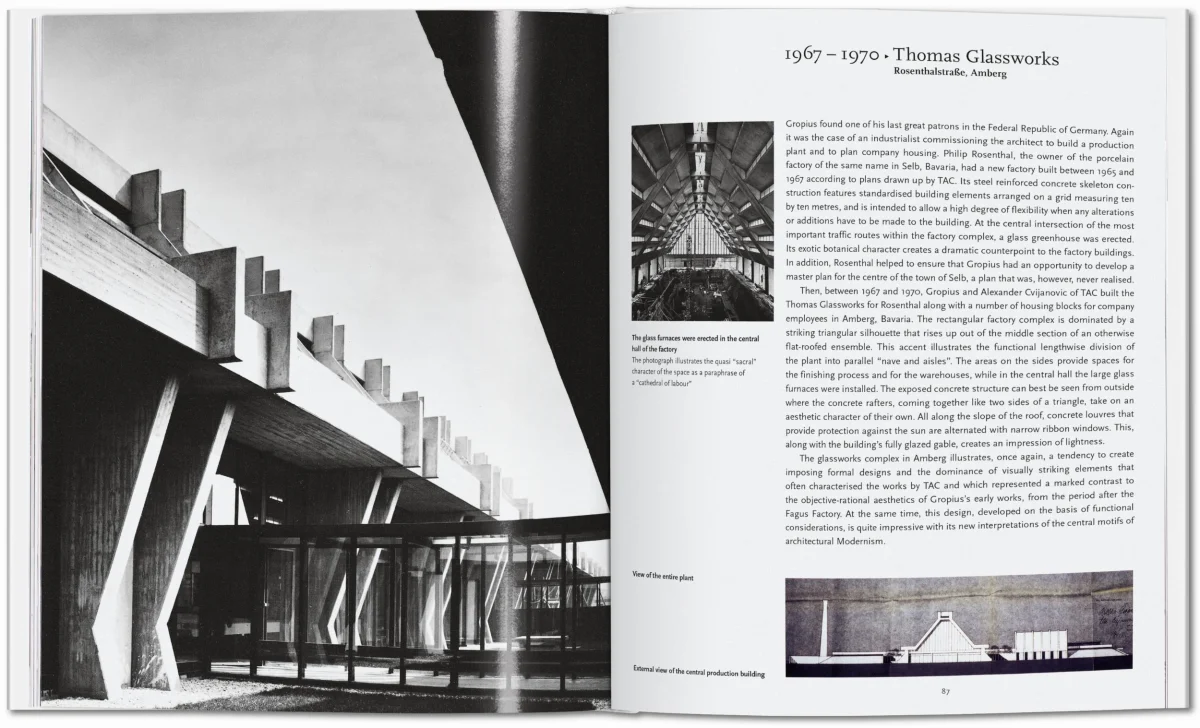Gropius
20Edition: EnglishAvailability: In Stock
Gropius
20Future Façades
Walter Gropius, visionary of the Bauhaus and beyond
In this essential architect introduction, we survey Gropius’ evolution and influence with 20 of his most significant projects, from the Bauhaus Building in Dessau, Germany, to the Chicago Tribune Tower and Harvard University Graduate Center, completed after Gropius’s exodus to the United States in 1937. We explore his role both as an architectural practitioner, and as a writer and educator, not only as a Bauhaus pioneer, but also, along with Ludwig Mies van der Rohe, as a leading proponent of the International Style.
Along the way, we see how many of Gropius’s tenets remain benchmarks for architects, designers, and urbanists today. Whether in his emphasis on a functional beauty or his interest in housing and city planning, Gropius astounds in the agility of his thinking as much as in the luminous precision of his work.
The authors
Gilbert Lupfer studied art history, history, Romance studies and cultural studies at the Eberhard Karls Universität in Tübingen and the Freie Universität in Berlin. Paul Sigel studied art history and German literature at the Eberhard Karls Universität in Tübingen. They both currently teach at the Technische Universität Dresden.
The editor
Peter Gössel runs an agency for museum and exhibition design. He has published TASCHEN monographs on Julius Shulman, R. M. Schindler, John Lautner, and Richard Neutra, as well as several titles in the Basic Architecture series.
Gropius
Hardcover, 21 x 26 cm, 0.63 kg, 96 pagesISBN 978-3-8365-4434-4
Edition: EnglishBorn back in 1985, the Basic Art Series has evolved into the best-selling art book collection ever published. Each book in TASCHEN’s Basic Architecture series features:
- an introduction to the life and work of the architect
- the major works in chronological order
- information about the clients, architectural preconditions as well as construction problems and resolutions
- a list of all the selected works and a map indicating the locations of the best and most famous buildings
- approximately 120 illustrations (photographs, sketches, drafts, and plans)
4.8











